|
There will be a Nov. 6 advisory referendum on marijuana legalization in Milwaukee County. The County Board voted, 15-1, Thursday to approve the referendum. The lone vote against it came from Supervisor Patti Logsdon, who had voted in favor when the referendum was before the Judiciary, Legislation and General Services Committee. Logsdon said she decided to change her vote after hearing from constituents. The referendum question will ask, "Do you favor allowing adults 21 years of age and older to engage in the personal use of marijuana, while also regulating commercial marijuana-related activities, and imposing a tax on the sale of marijuana?" County Supervisor John Weishan, the original sponsor of the measure, said during Thursday's meeting that a referendum could prod the Legislature to take action on recreational and medical marijuana issues. "We need to get them moving on those things today," he said. Supervisory Anthony Staskunas said he was not totally sold on the idea of legal recreational marijuana, but said that "it's shameful" that a few state senators and representatives "have stood in the door and refused to allow medical marijuana to come to a vote in the State Legislature." Staskunas said he has a friend with a serious disease who gets relief from cannabis. He said he resented "that a very small group of legislators are turning" his friend "into a criminal." On the recreational cannabis issue, he said, he wanted to hear from employers, medical personnel and law enforcement before coming to a conclusion about it, although he called the state's felony second-offense marijuana possession law "a travesty." "In the meantime...there's certainly nothing wrong with allowing the people of Milwaukee County to have their voice on this," he said. Supervisor Supreme Moore Omokunde supported the referendum and predicted nationwide cannabis legalization within five years. Moore Omokunde said he will be bringing forth legislation to expunge old marijuana offenses from criminal records. Without expungement, he said, "There will be rich white men make their millions" while Black men remain locked up for marijuana offenses. Supervisors Moore Omokunde, Sequanna Taylor, Steven Shea, Marcelia Nicholson, Felesia Martin, Jason Haas, Dan Sebring, and Marina Dimitrijevic joined the resolution as co-sponsors.
0 Comments
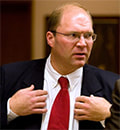 Gableman Gableman By Margo Kirchner The Wisconsin Supreme Court last week approved felony charges against an adult for conduct allegedly committed when he was eight or nine years old – too young to be accused of juvenile delinquency. In likely one of his last opinions before his term ends, Justice Michael J. Gableman wrote that a defendant’s age at the time he is charged, not his age at the time of the underlying conduct, determines how charges can be brought. Justice Ann Walsh Bradley, in a concurring opinion, disagreed with Gableman’s reasoning. She said it was “absurd to conclude the legislature intended that criminal liability can attach for acts engaged in by children ages zero-ten. The majority’s conclusion to the contrary defies the purpose and structure of our statutes, as well as the rationale of prior case law.” As noted by the Court, misconduct of a child under 10 years old generally is treated as a case of a juvenile in need of protection or services (JIPS), misconduct of a child aged 10 through 16 generally is addressed as a matter of juvenile delinquency, and misconduct of someone 17 or older is charged in adult court. Prior case law allowed for the charging of some JIPS-age conduct as juvenile delinquency, and statutes delineate the process for moving cases between juvenile court and adult court. But until Friday the law did not clearly provide that conduct committed when a person was of JIPS age could be prosecuted years later in adult criminal court. The state charged Shaun Sanders in adult court with four counts of misconduct involving his younger sister; at the time of prosecution Sanders was 19 years old. Count one charged that during a period of time beginning when Sanders was eight or nine years old he had sexually assaulted his sister, then six or seven, by having her lift her shirt for what Sanders called a “peek.” The jury acquitted Sanders of that charge but convicted him of sexual assault, incest, and child enticement for misconduct with his sister that occurred when Sanders was between 14 and 18 years old.
Sanders believed that admission of the count one allegations and evidence impacted the jury’s verdict on the other counts. He argued to the Supreme Court that his attorney was ineffective for not seeking dismissal of count one based on his JIPS age at the time of the alleged conduct. The court found that any motion to dismiss count one would have been meritless. “The defendant’s age at the time he was charged, not his age at the time he committed the underlying conduct, determines whether the circuit court has statutory competency to hear his case as a criminal, juvenile delinquency, or JIPS matter,” wrote Gableman. According to the Court, the six-year statute of limitations for most felonies, the need for the state to prove intent for many crimes, and constitutional protections against intentional delays provide sufficient safeguards for defendants like Sanders. Bradley, joined by Justice Shirley S. Abrahamson, agreed that Sanders’s attorney was not ineffective because the law regarding prosecution of JIPS-age conduct in adult court was previously unclear, but Bradley called the majority’s logic “out of step” with the law governing children’s liability. She noted that laws addressing child misconduct were designed to treat the child’s condition, not punish. Moreover, she said, by statute a child under age seven is “‘conclusively presumed’ to be incapable of negligence,” yet the Court ascribes criminal intent to the same-aged child. Further, she said the majority misread prior case law in reaching its decision and noted the “safeguards” listed in Gableman’s opinion did not protect Sanders. She urged the State Legislature to reexamine the law and rectify the majority’s decision. The State Supreme Court this week gave court-appointed lawyers a raise to $100 per hour from $70 per hour, but left in place the lowest-in-the-nation $40-per-hour rate for lawyers appointed by the State Public Defender's Office (SPD). It may be unlikely that those lawyers, who represent clients who can't afford their own attorneys, will get any relief from Gov. Walker, since he has done nothing to increase the $40 rate since he assumed office in 2011. In outlining major budget policies for the upcoming 2019-21 budget, Walker's staff said agencies and departments should assume "zero growth in overall" general revenue. A list of potential exceptions did not include the State Public Defender's Office. The move to increase pay for one set of lawyers but not others will likely encourage defense attorneys to refuse SPD appointments and wait until judges are forced to appoint lawyers to avoid denying defendants their Constitutional rights. The move may cost indigent defendants money they don't have, as counties are much more likely than the SPD's office to seek repayment. A parade of defense lawyers this week asked the State Supreme Court to increase pay for SPD-appointed lawyers, saying the lack of attorneys willing to work for $40 per hour meant that defendants were being wrongly held in jail when they should be released. Lawyers willing to take the cases for $40 an hour too often are inexperienced or lacking in other areas, they said. “We are happy that the court made the much-needed move in Supreme Court rate to $100 per hour," said attorney John Birdsall, one of the petitioners seeking a raise for SPD-appointed lawyers. "However, the public defender-appointed rate remains the nation’s lowest at $40 per hour and has been virtually unchanged for 40 years. "
Birdsall said he hoped the counties lobby the Legislature to raise the public defender rate to protect their own finances from new demands for funding for court-appointed lawyers. "The court’s raising the rate for court-appointed counsel is obviously welcome and a step in the right direction," he said. "However, the lack of lawyers to handle the vast majority of the 58,000 cases that are farmed out from the SPD to private lawyers will soon overwhelm an already highly stressed system in the coming year or two. "Waiting for the coming collapse of our public defense system before taking substantial and comprehensive action would be a serious mistake," he said. "Our state is doing very well economically and the cost of such a fix is literally a fraction of one percent of the state budget. The time to act is now.” 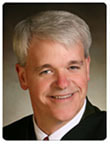 Reilly Reilly By Gretchen Schuldt A Kenosha woman first was viciously attacked by a dog and then tased and shot by police trying to subdue the animal, according to Court of Appeals records. And, because it was the second time the dog, named Tank, bit someone, the victim of the attack cannot collect from the dog owners' insurer. The Integrity Mutual Insurance Company's policy "unambiguously excludes coverage for injuries caused by a dog that has previously injured a person," Appeals Judge Paul F. Reilly wrote in a decision handed down this week. The decision upheld a ruling by Kenosha County Circuit Judge Anthony G. Milisauskas. The basic facts are not disputed, according to documents filed in the case. Kathryn (Kit) Baumann-Mader was in her kitchen on Aug. 19, 2015 when she heard yelling from outside. She ran to the side door and saw another woman, Sara Hanson, holding her thigh and screaming "He bit me!" Tank ran into a neighbor's yard, where he was tackled by "Junior," the son of Tank's owners, Shawn M. Lievense and Annette S. Salazar, according to a brief filed by attorneys for Kit Baumann-mader and her husband, David Mader; and Hanson and her husband, Cole Hanson. "As Junior was trying to restrain Tank, he, too, began crying and yelling, 'They’re going to kill my dog,' 'they’re going to euthanize him,' ” the brief said. Kit consoled Junior and helped him restrain Tank, then went into her house and got a tow strap to use as a leash for the dog. She help hold Tank down until police arrived. Then she turned the dog over an officer. As the officer tried to get the dog into a squad car, Tank got loose, according to the brief. "Tank 'lock[ed] eyes' on Kit and lunged at her, knocking her backwards to the ground," the brief said. "Tank bit her on the back/side of her thigh, the back of her thigh, her inner thigh, and her crotch area. As Kit describes it, 'He just started - - kind of like just started munching all around the thigh.' ” 'He just started - - kind of like just started munching all around the thigh.' ” The brief continues:
"Then things went from bad to worse for Kit. As she was trying to push Tank off of her, she felt a 'sudden shock of electricity' in her left foot. A police officer apparently tried to shock Tank, but one of the prongs of the Taser shot into Kit’s left foot instead. Kit then remembers 'hear[ing] a bunch of sounds that sounded like firecrackers going off.' She realized that the officers were shooting at Tank. And then the next thing she recalls is her left foot “really hurting” and Tank laying on his side by her feet. ' "As emergency responders were treating her thigh wounds, she heard one responder whisper to another, 'Is that a dog bite?' The other responder answered, 'No, I think it’s a bullet hole.' At that moment, Kit realized she, too, had been shot." Baumann-Mader was taken to the hospital where she had 29 staples put in her thigh and groin area. Her foot was repaired with two plates and 14 screws. She was discharged after a week in the hospital, but required in-home care for a time. The scars remain. Tank's history gave the insurance company a legitimate out, Reilly wrote for the District 2 appeals court panel that also included Appeals Judges Lisa S. Neubauer and Brian K. Hagedorn. Tank, an English bulldog, bit someone in February 2015. The bite, which a police report said was unprovoked, required medical attention. It was not reported to the insurer. The insurance policy makes clear, Reilly wrote, that damages caused by a second biting incident by the same dog are not covered. "Integrity’s policy is not contrary to public policy; Kit and Sara’s injuries were caused by Tank, and the exclusion extends to injuries also allegedly caused by the police as the officer’s actions were not an independent cause," he wrote. By Gretchen Schuldt Seventy percent of the possession of marijuana cases filed in Milwaukee Municipal Court last year were against African Americans, records show. Blacks account for just 40% of the city's population, but were defendants in 601 of the 860 marijuana possession cases. In addition, 139 cases were filed against Hispanics, 30 more than the 109 cases filed against whites, according to Municipal Court statistics. Hispanics account for just 17 percent of the city's population; whites make up 45% of the city's residents. The Municipal Court caseload reflect activities of the Police Department. The Wisconsin Justice Initiative previously reported that African-Americans in Milwaukee County were far more likely to be charged with felony second offense possession of marijuana cases than are other races. Simple possession of less than 25 grams of marijuana in the city can usually be charged as a municipal offense rather than as a state misdemeanor or felony. The municipal fine for possession is $50, though costs and fees will increase that to $124 for an adult and $94 for a juvenile. (Smoking marijuana in a public place is punishable by a fine of up to $250 plus fees and costs.) Below is a map showing the Milwaukee or mostly Milwaukee zip codes where Municipal Court defendants charged with possession of marijuana resided and the number cases brought against those defendants.
Not all Municipal Court defendants live in Milwaukee and so not all cases are shown.  Hagedorn Hagedorn By Gretchen Schuldt Turning a car around at a wayside late at night does not provide police with enough reasonable suspicion enough to justify a search of the vehicle, a Court of Appeals judge affirmed last week. District 2 Appeals Judge Brian K. Hagedorn upheld Fond du Lac County Circuit Judge Robert J. Wirtz's ruling tossing a search that resulted in an arrest for possession of marijuana. The county argued that Isaac A. Dahlke's actions when he entered a wayside about 12:30 a.m. and turned around near a boat launch "constituted reasonable suspicion that illegal activity was afoot," Hagedorn wrote in his decision. Deputy Lucas Olson testified that the park was used for illicit activity, "especially during that timeframe." He did not, however, see any illegal activity. But, wrote Hagedorn, "The county has no constitutional authority to stop someone simply for driving when and where bad things often happen. While this may cause a reasonable law enforcement officer to have an inkling something is up, it does not rise to the level of providing a reason to suspect that the individual has committed, was committing, or is about to commit a crime. While it might be a reasonable hunch, without more, it is still just a hunch." The county also argued that Dahlke was on county park property when he entered the wayside. The park is closed after 10 p.m. by ordinance, the county argued, so the officer had a reasonable suspicion that Dahlke was violating the ordinance. Hagedorn also rejected that argument. County ordinances do not clearly establish the boundaries of the park or whether the wayside is included. In addition, and the wayside, between Lake Winnebago and U.S. Highway 45, is marked for drivers approaching from either direction. "An ordinary driver accepting the highway sign’s invitation to pull in to the wayside for an evening nap on a long journey would appear to have no idea they are breaking the law...." Hagedorn wrote. News flash: A County Board committee on Thursday recommended, 5-0, that a marijuana legalization referendum be held in November. The referendum question would ask, "Do you favor allowing adults 21 years of age and older to engage in the personal use of marijuana, while also regulating commercial marijuana-related activities, and imposing a tax on the sale of marijuana?"
The issue will go to the full County Board on May 24. The question would be on the Nov. 6 general election ballot. The resolution calling for the referendum was sponsored by County Supervisor John Weishan. Members of the Judiciary, Safety and General Services Committee voting in favor of it were Supervisors Anthony Staskunas, Sylvia Ortiz-Velez, Deanna Alexander, Patti Logsdon, and Steven Shea. Alexander's motion to make the referendum part of the Aug. 14 primary election failed on a 4-1 vote.  Yamahiro Yamahiro By Gretchen Schuldt Thirty-six circuit court judges from 18 Wisconsin counties are together publicly supporting a proposal to increase pay for appointed defense lawyers. "As trial judges, we experience, on a daily basis, the impact that the underfunding of indigent criminal defense has on the quality and integrity of our criminal justice system," Milwaukee County Circuit Judge Glenn H. Yamahiro wrote to the State Supreme Court. Yamahiro was the main author of the letter and was joined by the author judges. "These impacts often impede our ability to function effectively and efficiently. We have observed a decline in the quality of representation provided to indigent defendants. Many experienced lawyers have discontinued accepting public defender appointments out of economic necessity. As a result we face an increasing number of inexperienced or underqualified lawyers representing indigent defendants in serious criminal matters." Yamahiro and the 35 other judges were commenting on a petition pending before the Supreme Court that seeks to raise from $40 an hour to $100 an hour the amount paid to lawyers appointed by State Public Defender's Office (SPD) to represent clients who cannot afford to hire a lawyer. SPD makes the appointments when the office has excessive caseloads or conflicts of interest. The Supreme Court will hold a public hearing on the matter May 16. "It is imperative that our Supreme Court exercise leadership to address the Constitutional Crisis...because the executive and legislative branches of government have failed to address this problem...over the past 40 years," he said. "We have seen an increasing number of requests for the appointment of new counsel and ineffective assistance of counsel claims," the letter says. "Cases that we are required to continue based upon ineffective assistance of counsel...have negative impacts on crime victims. In many instances, victims often have to endure additional proceedings such as a resentencing or even retrial, in cases that should be closed. ... We believe that it is beyond dispute that the criminal justice system operates at its best when each side has access to quality representation."
The court must take leadership and address the because the executive and legislative branches have failed to do so over the past 40 years, he said. The 35 other judges signing are:
 O'Hear O'Hear By Gretchen Schuldt Wisconsin's adult incarceration rate has passed the national average, according to a new federal report. The state locks up a larger share of its population than does any of its neighboring states of Michigan, Illinois, Minnesota, or Iowa, according to a new federal report. It's a significant change in status – the state has lagged behind or matched the average incarceration rate for the past several years. The statistics are based on 2016 data, and so do not reflect the impacts of legislative changes, such as tougher drunk driving laws that are sending more people to prison. Wisconsin jails or imprisoned 790 out of every 100,000 adults, while the nationwide average for states was 780 per 100,000, according to the report, "Correctional Populations in the United States, 2016." Michael O'Hear, a Marquette University Law School professor and author of Wisconsin Sentencing in the Tough-on-Crime Era: How Judges Retained Power and Why Mass Incarceration Happened Anyway, said the state's incarceration rate actually was much lower than the national average in the 1970s. That the rate rose above the national average carries symbolic weight, even though the the actual increase from the previous year was relatively small. The state's incarceration rate in 2015 was 780 per 100,000 residents, the same as the national average. In 2014, the state locked up 770 people per 100,000, while the national average for states was 800 people per 100,000. The figures include people aged 18 years and older in prisons and local jails, according to the report, published by the U.S. Department of Justice's Bureau of Justice Statistics. The severity of crime is not the issue, O'Hear said. "The increased rate I don't think at all is dictated by the violent crime rate," he said. Instead, he said, the increase is attributable to "thousands and thousands of decisions made by hundreds of officials all across the state." Those involved include police, prosecutors, judges, and Department of Corrections employees, he said. The $40 per hour the state pays private lawyers to defend indigent clients also is an issue, he said. The rate is the lowest in the nation. "Assigned counsel pay is a scandal in Wisconsin," he said. "Forty dollars an hour is just not a figure that will work for an experienced, competent attorney." With so many players involved, O'Hear said, it is not so easy to answer the question "How do you deal with this?" The figures indicate the state has decided to rely on imprisonment, but there are other things it could do, such as increase funding for treatment and diversion programs, he said.
Expanding compassionate release to allow sick and elderly inmates out of prison also would help, as would implementing good time to allow inmates to shave time off their sentences. Most states have good time programs, but Wisconsin does not, O'Hear said. Ending the practice of sending back to prison people on probation or extended supervision who violate Department of Correction rules, but are who are not accused of new crimes would help, too. O'Hear, asked what he would do if he could do just one thing, said he would "cut maximum sentences in half. ...They grew a lot in the last generation." Meanwhile, the state's prisons are overcrowded and a study is underway to determine if the state should add to its inventory. "I think they will build more," O'Hear said. "I hope they don't."  Thompson Thompson By Gretchen Schuldt The number of lawyers in Wisconsin willing to defend indigent clients for $40 an hour dropped 16% in five years, the head of the State Public Defender's office told the Supreme Court. "Considering the $40 rate and the cost of operating a law practice, it is unsurprising that there are fewer attorneys willing to accept SPD (State Public Defender) appointments," State Public Defender Kelli S. Thompson wrote to the justices. There were 1,099 attorneys who accepted the cases in 2012 and 921 in 2017, a decline of 178, she said. Thompson wrote to provide input on a petition pending before the court to raise from $40 an hour to $100 an hour the amount paid to lawyers appointed by SPD to represent clients who cannot afford to hire a lawyer. SPD makes the appointments when the office has excessive caseloads or conflicts of interest. The Supreme Court will hold a public hearing on the matter May 16. Thompson did not specifically endorse the $100 rate but wrote "the $40 per hour rate is inadequate and should be increased." The $40 rate, the lowest in the nation, "coupled with difficulties in recruiting and retaining being attorneys from all areas of practice to locate in more rural parts of Wisconsin, there are negative effects on the rights of defendants, victims, the efficiency of the court system, and the budgets of both County and state-based criminal justice system partners," Thompson said. In northern counties, there has been a "steady increase" in the number of SPD appointments made to lawyers who live outside the county where the case is filed. In fiscal year 2012, Thompson said, 28% of Ashland County appointments went to out-of-county lawyers; in 2017 that figure was 73%. In Bayfield County, out-of-county lawyers get 99% of appointments. "As a result of the shortage of private bar attorneys willing to accept appointments at the $40 per hour rate, the justice system is put on temporary hold (affecting defendants as they wait in custody or with bail restrictions, prosecutors with open cases, victims waiting for resolution, and court calendars at standstills)," she wrote. On April 6, the State Public Defender Board unanimously approved the following statement: In Marathon County, it takes an average of 80 contacts and 17 days to appoint a private attorney. In Price County, it takes an average of 33 days to appoint a private lawyer; in Appleton, it takes 17 contacts to find a lawyer, she said.
"In three difficult cases, it took 302, 261, and 260 contacts to find an attorney," she said. The Ashland County office requires 39 contacts per case and an average of 24 days to appoint a lawyer, she said. The Ashland County office handles cases in Ashland, Bayfield, and Iron Counties. "The lack of availability in rural areas is beginning to have an indirect effect in Milwaukee as more and more attorneys from urban areas are appointed to cases in rural counties," she said. Her office has made 18 separate formal attempts to increase the $40 per hour rate since 1999 , Thompson said. "SPD budget requests have not been included in the budget introduced by the Governor, and none of the stand-alone legislation has received a public hearing or vote by the Legislature or its standing committees," she said. During 2015-17, SPD paid out $41.8 million in attorney compensation, based on a $40 rate. Increasing the rate to $100 per hour would cost an additional $62.6 million, she said. During the last legislative session, she said, the SPD proposed a tiered system in which hourly pay would increase with the difficulty of the case. That would have cost about $20.2 million over a biennium when fully implemented, she said. Below are excerpts from additional comments submitted to the Court. The deadline to submit comments was Tuesday. As a judge, I have learned that the relative unavailability of even minimally "adequate" private attorneys who are willing to take SPD appointments results in substantial inefficiencies in the criminal justice system. The appointment of private attorneys for SPD cases is often delayed because the local SPD office has been forced to seek attorneys from an ever-widening geographic area. I have also learned that a downstate attorney's willingness to take appointments in the Northwoods is not necessarily commensurate with the attorney's skill level. Late last year I was compelled to grant a postconviction motion for withdrawal of a plea in a high-profile felony prosecution due, in part, to inadequacies in the SPD-appointed attorney's handling of the matter. In my judgment, the upshot of all this is that, at the current rate of compensation paid to private attorneys appointed by the SPD, the number of properly qualified private attorneys willing to accept SPD appointments in my county is woefully deficient. – Oneida County Circuit Judge Michael H. Bloom The abysmal SPD rate guarantees only three types of lawyers now take appointments on anything like a regular basis: inexperienced new grads; high-volume attorney juggling unmanageable caseloads in an effort to make ends meet; and competent, experienced saints (who are few and who are unfairly financially stressed). ... At least in Milwaukee County, complex felony cases are routinely relayed through a series of appointments. Two, three, four, and five attorneys are often appointed to one case, through a series of the new-grad or volume-juggler attorneys until the case finally lands in the hands of one of the few competent, experienced attorneys who can spot and litigate issues, hearings, trials, and who can responsibly and ethically deal with the special challenges of representing limited or challenged (and often challenging) clients. What a waste. Defendants are held in custody longer; more court hearings are required with more pay to attending judges, clerks, court reporters, deputies, prosecutors, jailers, and defense attorneys. It's absurd. – Kathleen M. Quinn, Milwaukee |
Donate
Help WJI advocate for justice in Wisconsin
|
Copyright © 2024 Wisconsin Justice Initiative Inc.
The Wisconsin Justice Initiative Inc. does not endorse candidates for political office. The Wisconsin Justice Initiative Inc. is a 501(c)3 organization.
The Wisconsin Justice Initiative Inc. does not endorse candidates for political office. The Wisconsin Justice Initiative Inc. is a 501(c)3 organization.





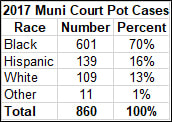
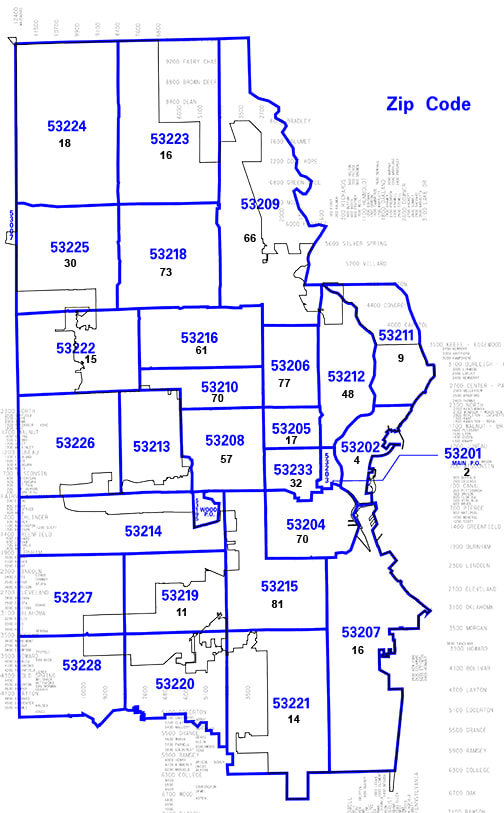
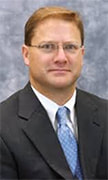

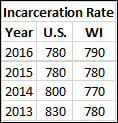
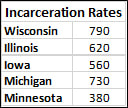

 RSS Feed
RSS Feed